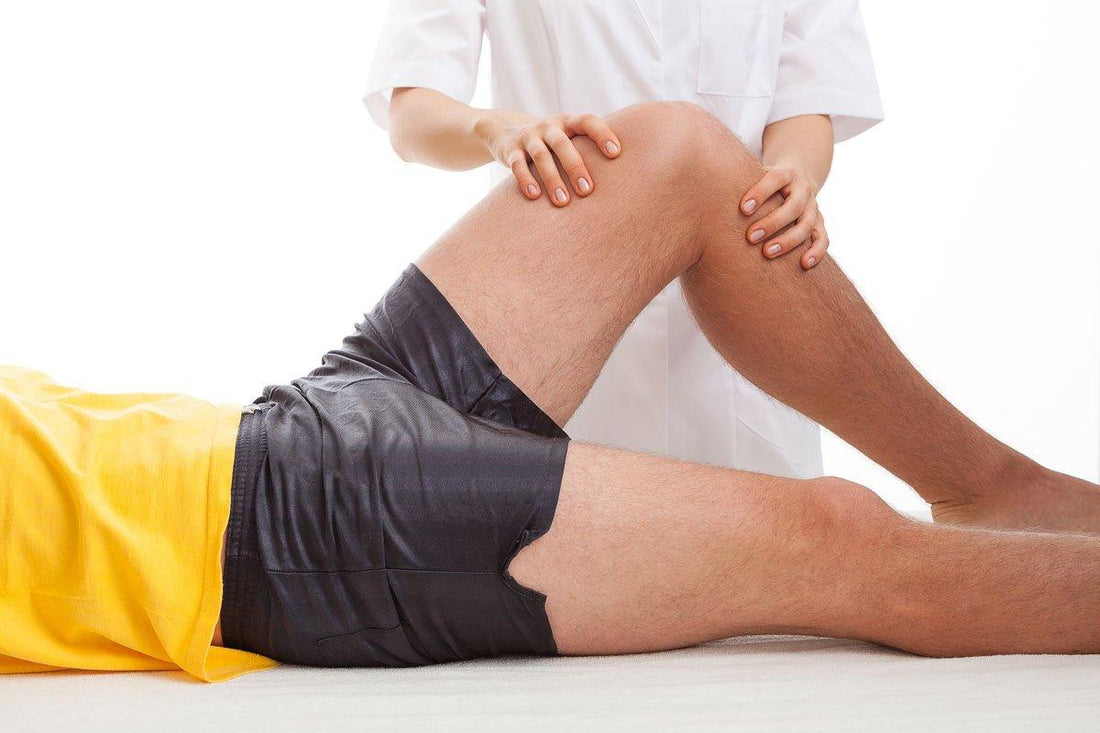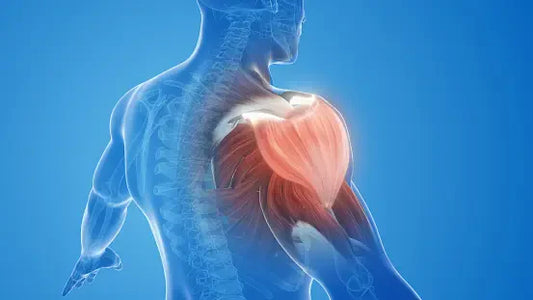Knee physical therapy is one of the most popular physical therapy treatments for knee injuries. If you are injured and have knee pain, it is important to seek knee physical therapy. Knee physical therapy can help your knee joint function optimally and reduce pain.
The knee is the largest joint in our body. It is the connecting point of three bones in the leg. The lower end of the femur (thigh bone), the upper end of the tibia (shinbone), and the patella (knee cap).
Other parts include the shock absorbing cartilage, acting as cushions between articulating (moving) bones in a joint. The tendons are the cords connecting muscles to bones. Ligament are the bands connecting bones directly to other bones. Physical therapy addresses damage to these tissues. The ligaments alone are vulnerable to pulling, stretching and tearing.
In this blog, we will discuss the benefits of knee physical therapy and give you an overview of knee anatomy. We will also discuss physical therapy for knee injuries and the various types of knee physical therapy treatment. Finally, we will give you tips on how to find the right knee physical therapy therapist for you.
What is Knee Physical Therapy?
Knee physical therapy is a type of rehabilitation that helps patients with knee injuries or conditions regain strength and mobility. The therapist will design a custom treatment plan based on the patient’s individual needs. The goal of knee physical therapy is to help the patient return to their previous level of activity and function.
Knee physical therapy can help patients with a variety of knee conditions, such as osteoarthritis, ligament tears, and patellar tendonitis. Treatment may include exercises to improve flexibility and range of motion, as well as strength-training to build up the muscles around the knee joint. Patients may also use electrical stimulation or ice/heat therapy to relieve pain and swelling.
In short, Knee physical therapy is a type of physical therapy that is used to help manage pain and inflammation in the knee joint. It is a type of physical therapy that is used to help with the healing process of the knee. There are various types of knee physical therapy that are available, so find the program that's best for you. People who are recovering from ACL Surgery may also benefit from knee physical therapy.
If you have suffered a knee injury or are dealing with a chronic condition, knee physical therapy may be able to help you get back on your feet again.
Knee Ligaments & Knee anatomy
The knee has four major supporting ligaments. The Anterior Cruciate Ligament (ACL) at the center, the Posterior Cruciate Ligament (PCL) also at the center, the Lateral Collateral Ligament (LCL) at the outer knee, and the Medial Collateral Ligament (MCL) at the inner knee. Of the four ligaments, the ACL is the most often injured. So it is, essentially, the “weak point” of the entire system. Although it is located next to the PCL, the PCL is much larger (four times as large). Physical therapy treats damage to all these interacting, moving parts.
Knee anatomy is very complex, and there are many different ways to describe it. Here are 5 things you should know about the knee:
1. The knee is a joint that connects the thigh bone (femur) to the shin bone (tibia).
2. It is held together by ligaments, which are strong bands of tissue that keep the bones in place.
3. The knee has two main bones: the femur (thigh bone) and the tibia (shin bone).
4. There are also two smaller bones in the knee called the patella (kneecap) and the fibula (smaller shin bone).
5. The knee joint is surrounded by a thick layer of tissue called cartilage, which helps to protect the bones and keep them from rubbing against each other.
Your knee is a joint that's responsible for a lot - from walking, running and jumping to everyday activities like sitting and standing. And, as you might have guessed, it's a complex joint made up of two parts - the femur and the tibia. The femur attaches to the hip bone and the tibia attaches to the lower end of the shinbone.
The joint between these bones is called a “patella” and it's where your kneecap sits. To prevent pain in your knee or improve its function, there are several muscles that help move your knee.
Some of the most important muscles include the quadriceps, hamstrings, gluteus maximus, adductors, biceps Femoris muscle group, gracilis muscle group, vastus medialis muscle group, vastus lateralis muscle group...and so on.
Physical therapy for knee injuries
Knee physical therapy is a critical part of the rehabilitation process for knee injuries. It can help to restore range of motion, improve strength and endurance, and reduce inflammation. It's important to find a therapist who specializes in treating knee injuries, as this will ensure the best possible outcome. Be patient while pursuing PT; it may take several sessions before you see any improvement. PT can also help to improve balance and coordination, which is crucial for people with knee injuries. If you're looking to rehabilitate your knee, physical therapy is a great starting point.
Benefits of Knee Physical Therapy
Knee physical therapy is a great option for people who have sustained an injury to their knee. Depending on the severity of the injury, physical therapist may only need 10-20 sessions or it could go on for up to 45 sessions total. PT also aides in reducing pain, improving balance, and restoring function. If you're looking to regain functionality as quickly as possible, knee physical therapy is a great option for you.
If you’ve ever had a knee injury, you know how debilitating it can be. Even a simple task like going for a walk can become excruciating. Physical therapy is often recommended as part of the healing process, but you may be wondering what exactly it can do for you. Here are some of the benefits of knee physical therapy:
Pain relief
One of the main goals of physical therapy is to help reduce pain. This is especially important for people with chronic conditions like arthritis. Through a combination of exercises, stretches, and massages, your therapist will help loosen up any tightness in your muscles and joints, which can lead to pain relief. Knee physical therapy can be a great way to relieve pain.
By working with a physical therapist, you can develop a plan to stretch and strengthen the muscles around your knee joint. This can help to take the pressure off of your knee and reduce pain. Physical therapy can also help to improve your range of motion and flexibility, which can make it easier to move your knee without pain.
Increased range of motion
Another common goal of physical therapy is to improve range of motion. This is important because it allows you to return to your normal activities without as much pain or discomfort. Knee physical therapy can help you regain range of motion following an injury.
If you’ve recently suffered a knee injury, you may be wondering what kind of treatment can help you regain range of motion. Physical therapy is one option that can be very effective in helping you heal and get back to your normal activities.
Your physical therapist will work with you to create a customized treatment plan that includes exercises and other activities designed to increase range of motion in your knee. They will also provide guidance and support throughout your recovery process.
Stronger muscles
Physical therapy exercises can help to strengthen the muscles around the knee joint, providing support and stability. Knee physical therapy can provide stronger muscles around the knee joint, which can lead to better joint stability and function. The therapist will work with the patient to develop a customized exercise program that includes strengthening and stretching exercises.
Patients who undergo knee physical therapy can expect to see an improvement in their overall knee function. They may also notice a decrease in pain and swelling around the joint. In addition, patients may find that they have greater range of motion and improved muscle strength.
Better balance
Poor balance is often a cause of falls and injuries. Knee physical therapy can help seniors maintain their balance and prevent falls.
Falls are a leading cause of injury in seniors, and can often be prevented with regular exercise and balance training. Knee physical therapy can help improve balance by strengthening the muscles around the knee joint and improving flexibility.
Therapy can also help to increase range of motion in the knee joint, which can further reduce the risk of falls. For seniors who have already experienced a fall, therapy can help to improve mobility and reduce the risk of future falls.
Physical therapists recommend injury prevention. As a result, it will provide better protection for our knees. Because, it is one of the most easily injured joints in the human body. Therefore, it should receive additional warm-up before strenuous exercise. Without proper attention, a variety of injuries could result. These include: Cartilage Injuries, Chondromalacia, Tendon Injuries, Iliotibial Band Syndrome, Osgood-Schlatter Disease, Osteochondritis Dissecans, Plica Syndrome, or Arthritis.
Conclusion
Knee physical therapy is a treatment option that can help you recover from knee injuries. By understanding the anatomy of the knee and the physical therapy that is available, you can make the best choice for your individual injury. In addition, physical therapy for knee injuries can help improve joint range of motion, reduce pain, and improve mobility. Make sure to read through this blog to learn everything you need to know about knee physical therapy.
Answers You Want To Know
1. What are the best exercises for treating knee pain?
Physical therapy exercises are an important part of treating knee pain. To start, make sure to perform stretching exercises like the quadriceps stretch with ball, side lying leg raise, seated hip abduction, and heel raises on an incline bench 3 times per week. After that, you should begin strengthening exercises like the Swiss ball glute bridge, which will help to improve your overall knee joint range of motion. You should perform these exercises three times per week.
2. How often should I do these exercises?
You should do these exercises 3 times per week for the best recovery. In order to make sure you are getting the most out of your workout, start with the lightest load and work your way up to a heavier one. Make sure to take breaks between sets and be consistent with your routine; if you miss a day, try to make it up later in the week.
3. What type of equipment do I need to do these exercises?
To perform these exercises, you will need the following:
-
Knee brace: A knee brace helps to support the knee and absorb shock during exercises.
-
Knee pads: Knee pads help protect your knees from injury and provide extra cushioning when squatting, lunging, and stretching.
-
Exercise ball: An exercise ball is perfect for this type of workout as it helps to promote balance, joint stability and muscle strengthening.
To perform these exercises, you should do them twice per day, five days per week. Make sure to warm up your muscles before starting the exercises by doing some light stretches first.
4. Can I perform these exercises while pregnant or breastfeeding?
Yes, you can perform most knee physical therapy exercises during pregnancy and breastfeeding without any issues. However, always consult with your doctor first to make sure that the exercises are safe for you and your baby. The following exercises should be gentle on your body and won't cause too much discomfort or harm: - Quadriceps Stretch, Seated Hamstring Curl with Band, Supine Toe Stretch (Pigeon Pose) and Prone Hip Hinge.





















